Most Popular Cavalry Swords in History
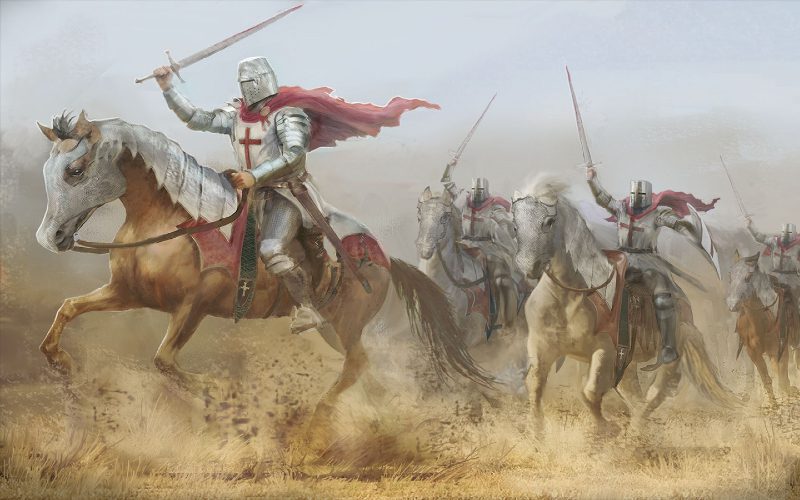
What’s in this article?
The cavalry or warriors mounted on horseback served as the main striking force of several armies. They often dominated the battlefield and fought alongside infantry or foot soldiers. Once combat closed into a melee, the cavalrymen would discard their lances and fight with their swords. Cavalry swords were widely used from the battlefields of ancient Rome to the Middle East, America, and Europe.
Let’s explore the most popular cavalry swords from ancient times to the early modern period.
Types of Cavalry Swords
The cavalry needed to slash downward at infantry, so they preferred long swords that were efficient against both mounted and dismounted opponents. By the 17th and 18th centuries, sabers made their way into the cavalry weapons of Western armies. Throughout the 19th century, cavalry swords remained in production in Europe and the United States.
1. Spatha (Rome)
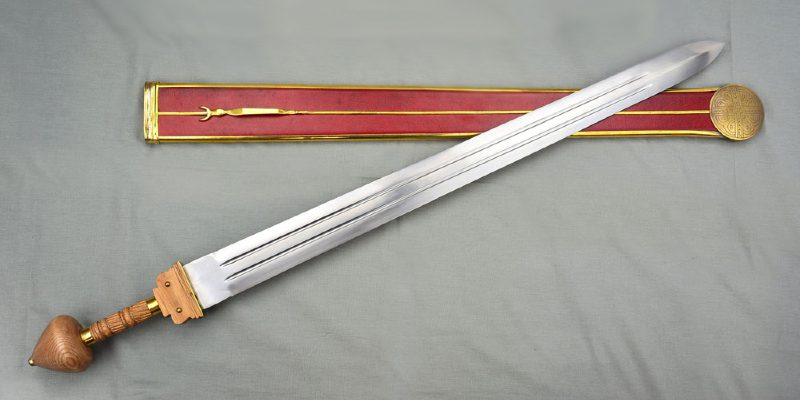
In the 1st century CE, the Roman long sword spatha equipped the auxiliary cavalry fighting from horseback. It had a long, straight, double-edged blade similar to the Celtic swords of the La Tène period. It evolved from the long Iron Age swords of the Gallic cavalrymen, who used it during their Roman service.
The spatha was efficient in delivering slashing strokes from horseback. Its use was associated with the way the Roman auxiliary cavalry was used on the battlefield. Some cavalrymen were deployed and called upon once the enemy was in retreat. So, they used their swords to chase down their fleeing enemies and cut them down as they ran.
By the 2nd and 3rd centuries, the spatha also equipped the Roman legionary infantry, replacing the short sword gladius. It was likely because a longer sword allowed additional reach. The Roman longsword was essentially an elongated version of the Pompeii-type gladius. It remained widely in use during the Migration period, from the fall of the Roman Empire to about the 7th century CE.
2. Tachi (Japan)
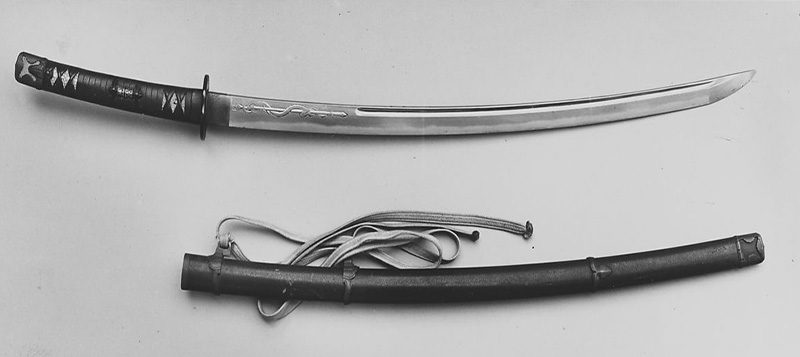
Primarily used from Heian to Muromachi periods in Japan, the tachi had a long and deeply curved blade. Early samurai warriors wore the sword with its edge downward and used it from horseback, as the curved blade was efficient for slashing downward on the enemies. When military tactics increased the use of the infantry rather than the cavalry, the katana sword emerged, which the samurai wore edge-up and tucked into the belt.
3. Kilij (Ottoman)
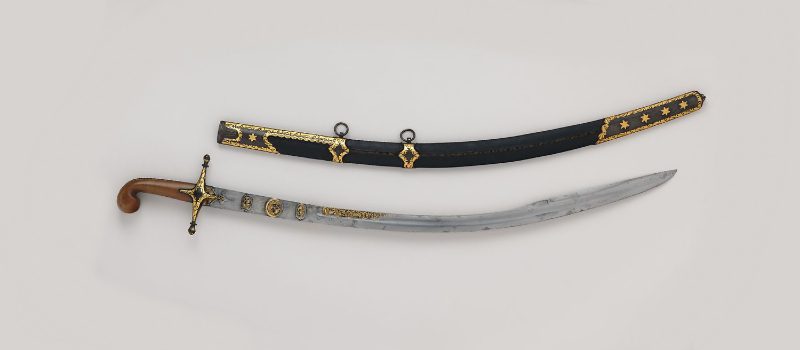
From the 14th to the 18th centuries, the army of the Ottoman Empire was feared for their proficiency with weapons, especially the kilij. The Ottoman cavalry ranged from light scouts to heavy shock troops that used swords or long spears. The kilij featured a flaring tip called a yelman, which enhanced its cutting power. Generally, Ottoman warriors would aim strikes at the head and neck of their enemies, using the speed of the horse to add power.
4. Mortuary Sword

During the 16th and 17th centuries, cavalrymen relied on various types of broadswords or swords with broad blades. Unique to Britain, the mortuary swords often featured images of King Charles I of England after his execution in 1649, hence the name. During the English Civil War, the Royalists and the Parliamentary cavalry used the mortuary sword. It also had a barred hilt, resembling the human rib cage, to protect the hand.
5. Estoc
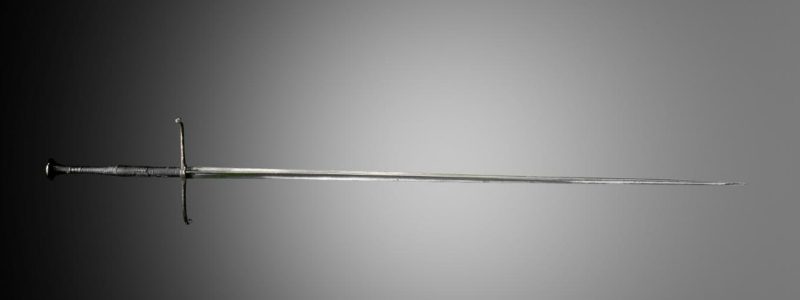
The French word estoc means thrust, and the sword had a long, narrow, quadrangular blade designed for thrusting against armored opponents. Not to be confused with the civilian dueling sword rapier, the estoc was the thrusting sword of the cavalrymen when plate armor was in use.
The acutely pointed blade of the estoc was efficient for piercing the gaps in plate armor. The cavalrymen sometimes carried it from the saddle when fighting on horseback or wore it on the belt as a sidearm when dismounted.
In the 17th century, the Polish winged cavalry known as hussaria used estocs with war hammers, lances, and pistols. They were originally light skirmishing horsemen in the way of the Hungarian hussars but later evolved into a shock force of heavy cavalry. They defended Poland from the Swedish, the Russians, the Ottomans, and Cossack bands.
6. Shashka (Russia)
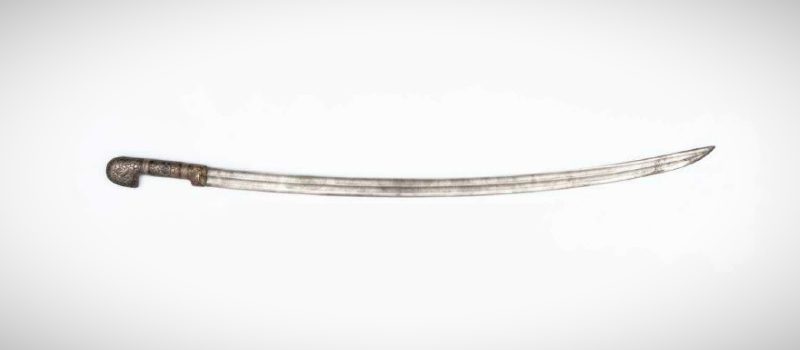
A saber-like weapon without a sword guard, the shashka was the cavalry sword of the Cossacks, people of Russia and Ukraine, known for their military skill and swordsmanship. They were mounted warriors who fought in several state armies as light cavalry, scouts, and raiders. During World War I, they conducted saber charges.
The shashka was efficient for slashing attacks while mounted on horseback. Without a sword guard, the Cossack was able to utilize the full length of the blade. The warrior also used a similarly designed short sword called kindjal once dismounted or fought on foot. Both of these swords had a very sharp tip that was efficient for thrusting.
7. British 1796 Pattern Light Cavalry Sabre (UK)
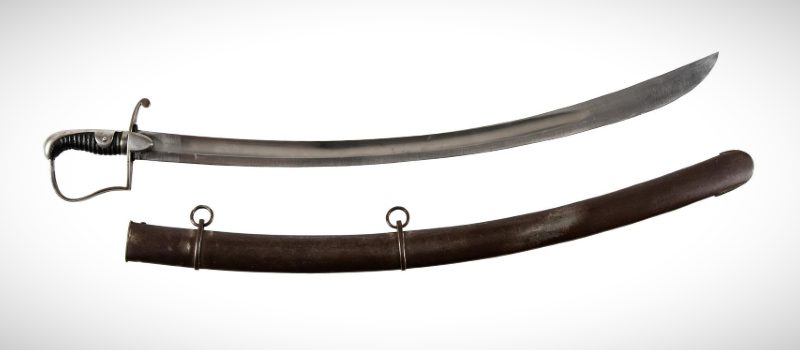
The Pattern 1796 Light Cavalry Sabre was lightweight and efficient for slashing attacks due to its curved blade, modeled on Eastern blades. During the French Revolutionary Wars, British commander John Le Marchant noted that the long and heavy straight swords of British cavalrymen were impractical during close quarters combat.
John Le Marchant developed a new British cavalry sword and published a manual of mounted warfare techniques, which became part of the British Army’s official regulations. The broadening of the blade near its tip gave the sword greater power upon impact, and his tactics focused on striking the opponent’s head when at a gallop.
During the Napoleonic Wars, the British Light Dragoons and the Hungarian hussars used the sabre. The Pattern 1796 equipped not only the British light cavalry formations but also the Prussian Army, Britain’s ally in the struggle against Napoleon. The Portuguese and Spanish also adopted the cavalry sword.
8. British 1853 Pattern Cavalry Trooper’s Sword (UK)
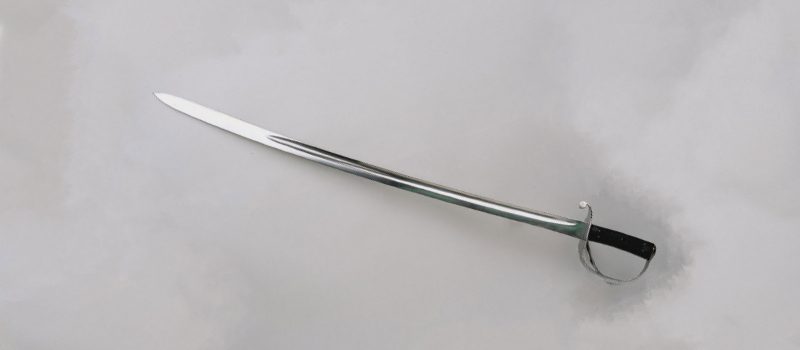
The British Army decided that the heavy cavalry should use a straight, heavy-cutting sword to make the strike more powerful. In 1853, the new cut-and-thrust cavalry sword emerged as a standard for both heavy and light cavalry.
During the Crimean War, the British heavy cavalry regiments used the Pattern 1853 but also performed unofficial bending tests that weakened the blade. Some cavalrymen likely used the sword during the war, while others preferred other older models. At the Battle of Balaklava, sometimes spelled Balaclava, the hussars and the dragoons wielded the sword. The Pattern 1853 was also used during some of Britain’s colonial campaigns.
9. French Model An XIII Sword (France)

The French used Roman numerals to indicate the years the sword was introduced based on the French Revolutionary calendar. The An XIII model had a straight, single-edged blade that could be used as a cutting weapon, though the French cavalrymen tended to use the tip.
In the latter part of the Napoleonic Wars, the French dragoons, the infantrymen trained in horse riding, and the heavy cavalry and the cuirassiers used the Model An XIII Sword—from the 13th year of the Revolutionary calendar.
10. Model 1840 Heavy Cavalry Saber (US)
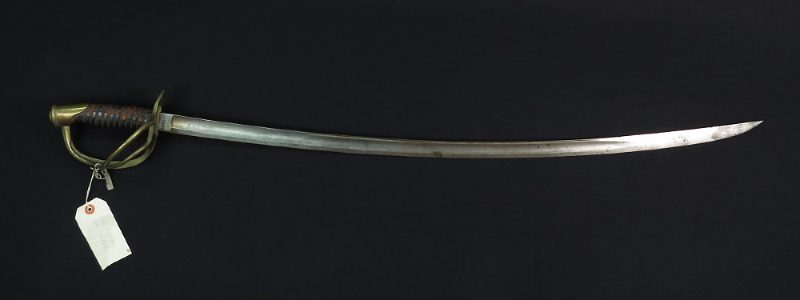
The classic US Civil War swords were the 1840 Heavy Cavalry Saber and the 1860 Light Cavalry Saber. The former was extremely long and heavy, hence called the Old Wristbreaker. It was modeled after the French light cavalry saber of 1822, featuring a single-edged, curved blade.
11. Model 1860 Light Cavalry Saber (US)
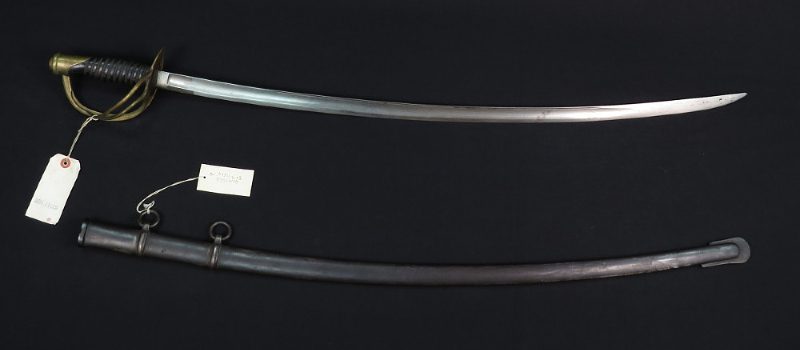
The U.S. Model 1860 Light Cavalry Saber replaced the heavier model of 1840, which was too heavy and clumsy to wield. During the American Civil War, the Confederate cavalry and the Northern Union used the new sword. It was closely similar to its predecessor, but the Model 1860 had a narrower blade and was efficient in hacking and thrusting.
Characteristics of Cavalry Swords
The cavalry swords greatly varied throughout different cultures and periods, but they were generally longer than infantry swords and provided greater reach. While some cavalrymen relied on sabers with curved blades, others utilized long straight swords.
Here are the general characteristics of cavalry swords:
Metal and Construction
Cavalry swords varied widely in material and construction depending on the region and period. The Roman cavalry sword spatha usually had steel edges welded onto an iron core and later featured pattern welded blades. On the other hand, Japanese swordsmiths used tamahagane steel in their blades and strengthened them with a clay tempering process.
From the 17th century, sword manufacture was industrialized, producing standardized patterns on the blade. In Europe, many cavalry swords such as mortuary swords had blades made in Germany, usually from Solingen, which produced the best quality sword blades. Modern reconstructions of cavalry swords often have high-carbon steel and properly tempered blades.
Blade Appearance
Cavalry swords greatly varied in form and shape, often adapted to the military strategy of the time.
Blade Shape
Cavalry swords were not always curved as some armies preferred straight blades for thrusting at the enemy or using the tip of the sword instead of the cutting edge. Cavalry swords with straight blades include the Roman spatha, broadswords or backswords, mortuary swords, and some British heavy cavalry swords.
The mid-18th century European cavalry swords had two blade types: straight and curved blades. The swords of the heavy cavalry were longer, heavier, and straight, while the light cavalry had swords with light curved blades. Cavalry swords with curved blades include Le Marchant’s 1796 Light Cavalry Sabre, the Japanese tachi, Turkish kilij, Russian shashka, and the U.S. Civil War swords.
Fullers
Many cavalry swords had fullers, sometimes referred to as blood channels. These lightened the blade by reducing the amount of metal used without compromising its strength. However, they were not used on early cavalry swords, such as the Roman spatha.
Blade Inscription
Intricate engraving often suggests that the sword belonged to an officer. The French cavalry officers often wore swords with regimental titles on the ricasso. However, a high level of decoration on the blade could also suggest that the sword was for ceremonial use only.
Size and Length
The cavalry needed greater reach for slashing downward at infantry, so they preferred longer swords which were also efficient against mounted enemies. The Roman spatha had blade lengths between 54 to 81 centimeters while the Japanese tachi had blades over 60 centimeters or 23.6 inches. Some cavalry officer’s swords such as the British 1796 Pattern had long blades, about 83 centimeters.
Sword Mounting
The cavalry swords varied in hilt designs and metal fittings but often had sword guards to protect the hand.
Roman Spatha
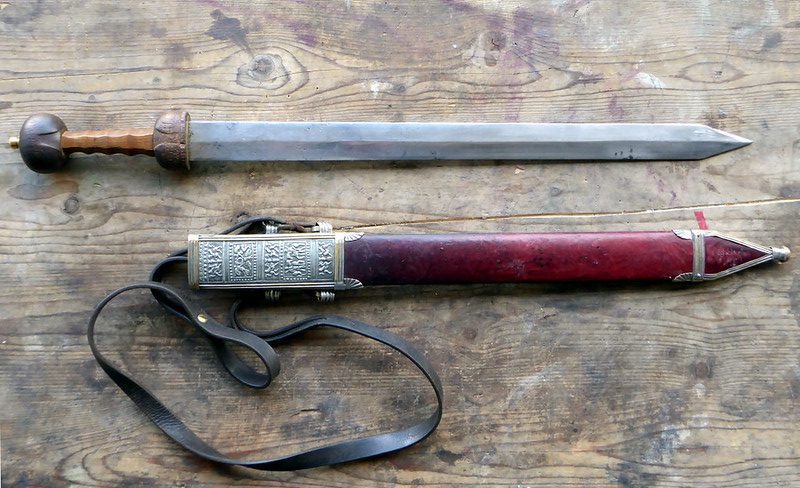
The Roman spatha had a wooden hilt, including the spherical pommel, grip, and hand guard. It also had a wooden scabbard often made from lime wood, though others were of willow, birch, alder, and poplar. The scabbard fitting also included the chape to protect the tip of the blade.
Japanese Tachi

The tachi had a wooden grip, often magnolia wood wrapped with sharkskin or ray skin, and a sword guard called tsuba which often came in ornamental designs. It was mounted in either shirasaya, a plain wooden scabbard, or koshirae, which consisted of a lacquered wooden scabbard and other metal fittings.
The early samurai warriors wore the tachi slung from the belt, with its cutting edge facing down, making it easier to draw when fighting on horseback. It was attached by a sageo cord, usually gilded leather, on scabbard.
Ottoman Kilij

The Ottoman kilij had a pistol-style grip or L-shaped pommel and straight quillons—arms of the crossguard—that formed into langets. Its scabbard also featured a slot cut at the back covered with sprung steel to make drawing the highly curved blade easier.
Mortuary Sword

Mortuary swords featured carved decoration of portrait medallions on the hilt, usually of the executed King Charles I. It also had a ribcage-like guard, often described as a half-basket hilt, to protect the hand.
Estoc

The estoc originally had a simple cross hilt with a long grip but later acquired a more developed sword guard. Earlier ones had no scabbards, though later thrusting swords were carried in a scabbard like other swords.
Shashka
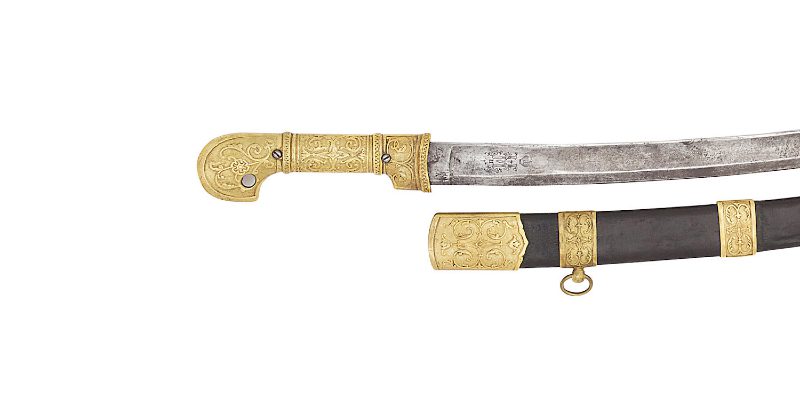
The shashka had a curved pommel but lacked a sword guard. The Cossacks used it for slashing attacks while on horseback, and the absence of the guard allowed them to cut using the full length of the blade.
British 1796 Pattern Light Cavalry Sabre
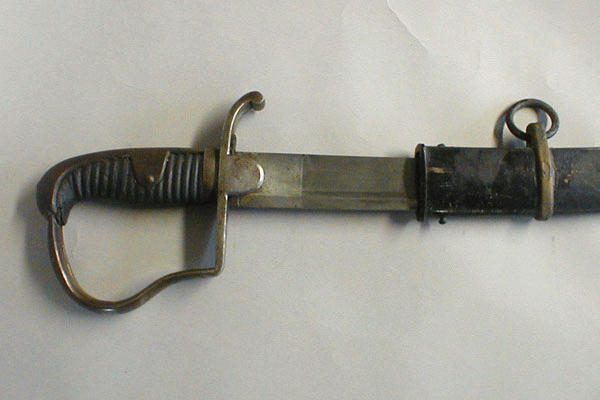
Most recognized for its simple stirrup hilt, the British 1796 Pattern Light Cavalry Sabre featured a curved pommel and D-shaped langets. It had one quillon protecting the thumb and came in a wood-lined steel scabbard with suspension rings.
British 1853 Pattern Cavalry Trooper’s Sword (UK)
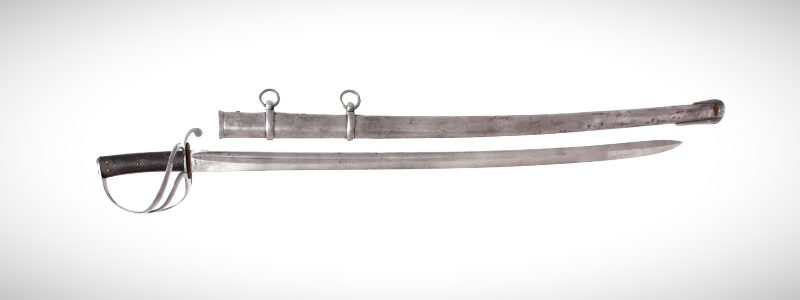
The British 1853 Pattern Cavalry Trooper’s Sword had a three-bar hilt consisting of a knuckle guard and a leather grip. Like many cavalry swords of the time, its steel scabbard also featured suspension rings.
French Model An XIII Sword

The French Model An XIII Sword had a four-bar hilt, with a knuckle bow and a guard plate. It had a wooden grip covered with leather and brass wire to prevent slipping from the hand. The sword also had a wood-lined steel scabbard with a chape.
U.S. Civil War Swords

The Model 1840 Heavy Cavalry Saber and the Model 1860 Light Cavalry Saber were similar in hilt design and mounting and only differed on the blade. These American Civil War swords had a brass basket hilt and guard and plain steel scabbard with suspension rings.
Light Cavalry Sword vs. Heavy Cavalry Sword
There were two types of cavalry: light cavalry and heavy cavalry. While the light cavalry troops used lighter arms and armor, the heavy cavalry troops were heavily armed and armored. The light cavalry soldiers were utilized in raids, skirmishes, and for military observation of a region to locate enemies. On the other hand, the heavy cavalry soldiers were used to make direct attacks into enemy ranks.
During the French Revolution and the Napoleonic Wars, cavalry swords differed in shape and function. The British light cavalry swords were curved sabers efficient for slicing and cutting, while the heavy cavalry swords were long and straight, designed for thrusting. Still, the French cavalry preferred to run through their opponents with the point of their swords.
History of Cavalry Swords
Through the 1700s, the sword was valued by the light and heavy cavalry and fulfilled a ceremonial role. By the late 19th century, cavalry swords declined as firearms became more sophisticated and powerful.
In the Napoleonic Wars (1801 – 1815)
French military leader Napoleon Bonaparte relied on his light cavalry: the chasseurs and hussars, and the heavy cavalry: the cuirassiers, during the Napoleonic Wars. Swords were the preferred weapon in a cavalry charge, though the light cavalry also used their lances. The armies also fought with bayonets and cannons.
Named after the metal breastplate or cuirass that they wore, the cuirassiers were the most elite cavalry units. They used long straight swords especially the Model An XIII Sword with pistols and carbines—or short-barreled rifles and muskets. The cuirassiers served as the shock force on the battlefield. The chasseurs on patrol also relied on a cavalry sabre, as firearms would take too long to reload in an encounter with enemies.
In the American Civil War (1861 – 1865)
The American Civil War between the Northern Union and the Confederate South was primarily a foot soldier’s war. The increased use of firearms made the traditional charge with sabers drawn impractical, though the 1840 Cavalry Saber and the 1860 Light Cavalry Saber were still issued.
The cavalry still had important roles in scouting, pursuit, and raiding. At the Battle of Winchester, Union forces conducted saber charges, though the tactic was increasingly rare. The Union infantry officers also wore the Model 1850 Foot Officer’s Sword but rarely used it in combat.
The Decline of Cavalry Swords
Even before the end of the Napoleonic Wars in 1815, cavalry swords as battlefield weapons were in decline in the Western world. They lost their significance due to the introduction of repeating rifles and machine guns. The infantry swords also became ceremonial weapons, and the NCO swords continued to be worn by noncommissioned officers as symbols of rank.
Still, some traditionalists in Eastern Europe, such as the Russian cavalries, continued with their sword-drawn charges in World War I from 1914 to 1918, and in World War II from 1939 to 1945. However, they suffered losses against enemies armed with machine guns.
When cavalry abandoned horses for armored fighting vehicles, they became known as armored cavalry. By the 1950s, there were no horse-mounted cavalry units in either the British or the U.S. army. Eventually, the United States made its 1st Cavalry Division an airmobile division with helicopters and air-portable weapons.
Conclusion
In the hands of cavalrymen, cavalry swords served as fearsome weapons on the battlefield. However, the development of firearms replaced cavalry swords in actual combat. Nowadays, military swords are only worn as symbols of authority for officers during ceremonial occasions.




